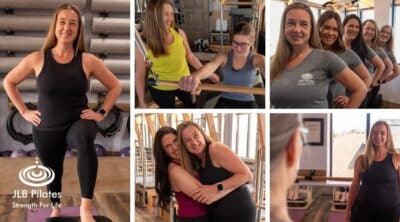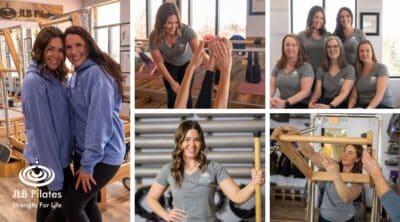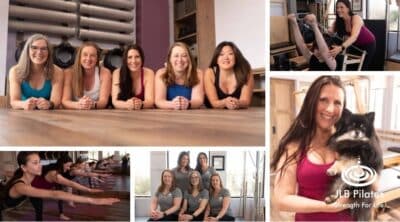This month in our Back-to-Basics series, we’re focusing on the Pilates principle of Breath. We encourage you to take this opportunity to refocus your practice on the principles that are the more advanced with every Pilates movement. If you missed our other posts in the series on foundational principles centering and control or our posts on intermediate principles concentration and precision, visit our blog.
Why Breath Matters in Pilates
The founder of the Pilates Method Joseph Pilates urged us to “above all, learn how to breathe correctly.” Breathing plays a vital role in the quality, effectiveness, and safety of your Pilates practice. By paying attention to what is otherwise automatic, you can elevate your movements from routine exercises to a transformative practice that heals through movement.
In Pilates, your breath is both a tool and a guide. When you slow down and focus on the inhales and exhales, you connect your mind to your body, engage your muscles, and regulate your nervous system. Focusing on your breath can also prevent unnecessary tension in your neck and shoulders.
In short, aligning your movement with your breath is the difference between simply doing an exercise and executing it with purpose. Focus on your breath, and bring clarity, control, and flow to your Pilates practice.
Breathe In to Create Space and Length
The inhale in Pilates is your opportunity to create space and length in your movements. During an inhale, you expand through the spine and ribcage and prepare your body to move. A full inhale:
- Encourages expansion through your torso, especially the thoracic spine (aka your mid-back)
- Activates your diaphragm, engaging the deeper muscles of your core to prepare for the following exhale.
- Elongates your spine, creating space between the vertebrae and allowing for greater range and flexibility.
- Prepares and brings awareness before performing a movement.
Let’s use the exercise Spine Stretch as an example. To prepare for the movement, you inhale deeply to lengthen your spine before initiating the forward fold. This sets your body up for a more controlled and spacious movement.
Breathe Out to Deepen Engagement and Effort
While an inhale prepares your body for a movement, an exhale helps your body execute a movement. Breathe out during the exertion phase of a Pilates movement. A focused exhale:
- Activates deep core muscles, especially the transverse abdominis and pelvic floor.
- Stabilizes the spine and pelvis.
- Releases tension in the shoulders, jaw, and other accessory muscles.
- Supports spinal flexion and deepens abdominal work.
For example, in the exercise Hundred, you should pair every pulse with a strong exhale to intensify core engagement and maintain stability.
Let’s Talk Tempo
In Pilates, tempo isn’t about speed. It’s about control and awareness. Breath plays an essential role in regulating the rhythm of your movements. A slower tempo encourages deeper muscle engagement and precision. It gives you time to breathe and move intentionally and thoughtfully. While a faster tempo can increase endurance, heat, and flow, you must carefully coordinate your breath with your movements to avoid sacrificing form.
Using your breath to set the tempo keeps your movements smooth, continuous, and safe. Think of your breath like a metronome for your body, providing rhythm and consistency without rushing through movements.
Practical Tips for Practicing Breath in Pilates
To practice the Pilates principle of Breath, try out these tips the next time you’re on the mat.
- Lateral Breathing: Inhale through the nose, expanding the ribs out to the sides, and exhale fully through the mouth to activate the abdominals.
- Pair Breath with Movement: Inhale to prepare and lengthen before a movement and exhale to engage during the exertion phase.
- Let Breath Guide Your Practice: Move only as fast as you can maintain proper breath control.
- Use Breath to Reset: If you lose the connection between breath and movement, take a full breath cycle before continuing.
Breath is a powerful internal guide to expanding and improving your Pilates practice. It stabilizes the body, centers the mind, and supports movements from the inside out. Focusing on Breath during your Pilates practice carries over into your daily life, too, improving your posture, your focus, and your ability to stay grounded under pressure. Inhale space, exhale power, and let your breath lead the way.
Interested in checking out our Pilates studio? We enjoy working with individuals in Maple Grove and surrounding communities to find healing through movement. Schedule your initial appointment with our team today.



